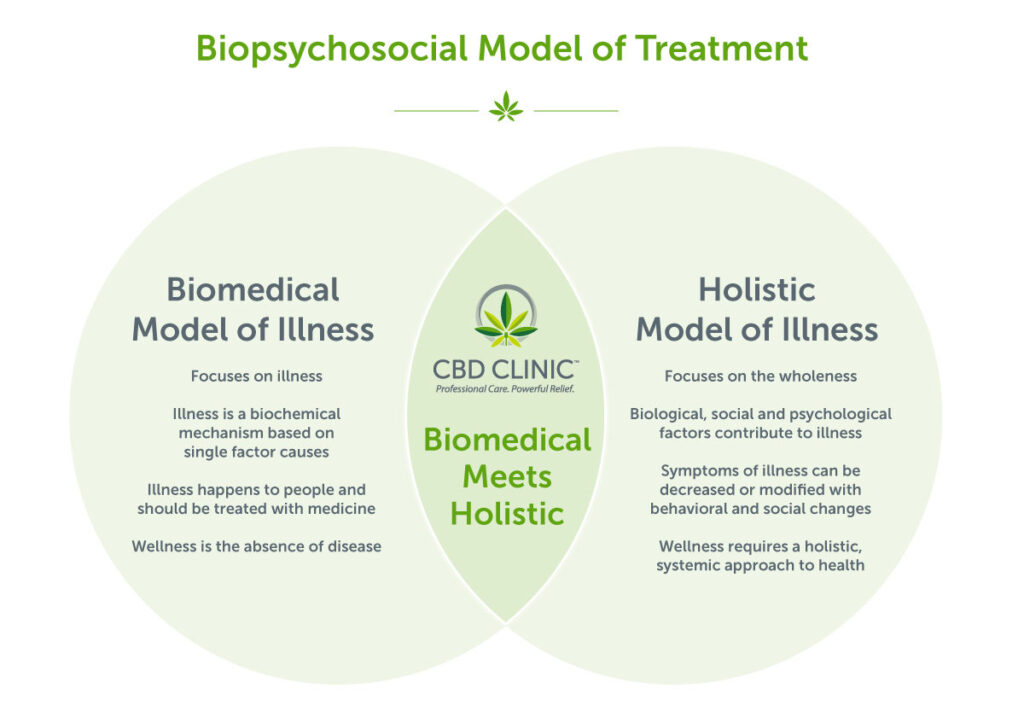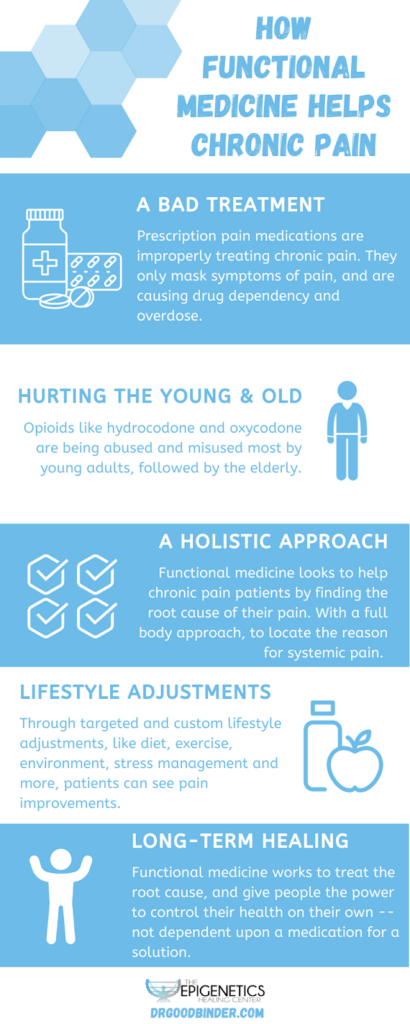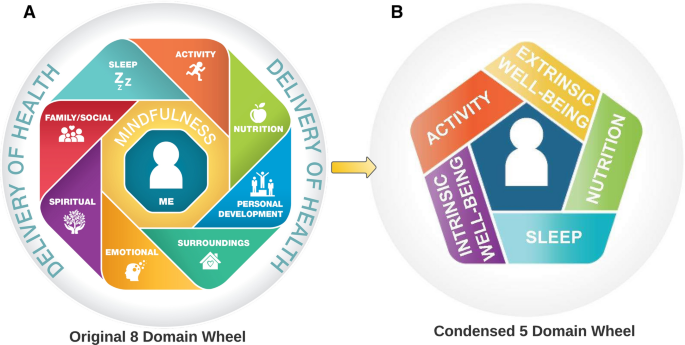Living with chronic pain can be incredibly challenging, affecting every aspect of your life. But what if there were holistic approaches that could provide relief and help manage this persistent discomfort? In this article, we will explore various holistic methods that have been proven effective in treating chronic pain, offering you new hope and possibilities for a pain-free future. From acupuncture and yoga to meditation and herbal remedies, discover how these alternative treatments can enhance your overall well-being and provide long-lasting relief from the burden of chronic pain.

Definition of Chronic Pain
Chronic pain is defined as any pain that persists for an extended period of time, typically longer than three months. Unlike acute pain, which is a temporary sensation triggered by an injury or illness, chronic pain lingers and can have a significant impact on a person’s quality of life. It is often characterized by a constant or recurrent discomfort that can range from mild to severe. Managing chronic pain requires a comprehensive approach that addresses not only the physical symptoms but also the underlying causes and psychological factors.
Duration of Chronic Pain
As mentioned earlier, chronic pain is distinguished by its duration. It is commonly agreed upon that pain lasting for more than three months can be classified as chronic. However, it’s important to note that for some individuals, chronic pain may persist for years or even become a lifelong condition. The unique nature of chronic pain necessitates long-term management strategies that go beyond temporary relief.
Types of Chronic Pain
There are various types of chronic pain, each originating from different sources within the body. Some common types include neuropathic pain, which is caused by damage or malfunction of the nerves, musculoskeletal pain, stemming from the muscles and bones, and visceral pain, arising from internal organs. Other forms of chronic pain may result from conditions such as arthritis, fibromyalgia, or migraines. Understanding the specific type of chronic pain one is experiencing is essential in determining the most effective treatment approach.
Causes of Chronic Pain
Chronic pain can arise from a multitude of factors, ranging from physical causes to medical conditions and psychological factors. Identifying the underlying cause is crucial in designing an appropriate treatment plan that addresses the root of the pain.
Physical Causes
Physical causes of chronic pain often stem from injuries, such as sprains, fractures, or post-surgical pain. In some cases, repetitive strain injuries, such as carpal tunnel syndrome or tendonitis, can also result in chronic pain. Additionally, poor posture, muscle imbalances, and structural abnormalities can contribute to persistent discomfort.
Medical Conditions
Numerous medical conditions are associated with chronic pain. These can include conditions such as arthritis, back pain, migraines, nerve damage, and autoimmune diseases like lupus or multiple sclerosis. In some instances, the pain may be a direct symptom of the underlying medical condition, while in others, it may be a secondary effect.
Psychological Factors
Psychological factors can play a significant role in the experience and perception of chronic pain. Conditions like depression, anxiety, and post-traumatic stress disorder can amplify pain sensations and make them more challenging to manage. Emotional stress, unresolved trauma, and negative thought patterns can also contribute to the persistence and intensity of chronic pain.

Conventional Approaches to Treating Chronic Pain
Conventional medicine traditionally focuses on managing chronic pain through various approaches, including the use of painkillers and medication, physical therapy, and invasive procedures. While these methods can provide temporary relief, they often come with limitations and potential drawbacks.
Painkillers and Medication
Painkillers and medication are commonly used to alleviate chronic pain symptoms. Non-steroidal anti-inflammatory drugs (NSAIDs), opioids, and muscle relaxants are often prescribed to provide relief. While these medications can be effective in the short-term, they may come with side effects and the potential for dependency or addiction if used for prolonged periods.
Physical Therapy
Physical therapy aims to restore function, reduce pain, and improve mobility through targeted exercises and modalities. It can be beneficial in improving strength, flexibility, and overall physical well-being, but its effectiveness may vary depending on the individual and the nature of the chronic pain condition.
Invasive Procedures
Invasive procedures, such as surgeries or nerve blocks, are typically reserved for cases where other treatments have been ineffective. These interventions involve more significant risks and potential complications, and their outcomes may not always guarantee complete pain relief. Therefore, they are often considered as a last resort for chronic pain management.
Limitations of Conventional Approaches
While conventional approaches have their merits, they are not without limitations. Understanding these limitations is crucial for exploring alternative, holistic approaches to chronic pain management.
Side Effects
Conventional pain medications can come with various side effects, ranging from relatively mild, such as dizziness or gastrointestinal disturbances, to more severe, like liver damage or addiction. Long-term use of these medications may also lead to tolerance, requiring higher doses for the same level of pain relief.
Dependency and Addiction
The potential for dependency and addiction is a significant concern with opioids and other pain-relieving drugs. Prolonged use of these medications can result in physical and psychological dependence, making it challenging to reduce or discontinue their use without experiencing withdrawal symptoms.
Temporary Relief
Conventional approaches often focus on managing symptoms rather than addressing the underlying causes of chronic pain. As a result, the relief provided may be temporary and fail to offer long-term solutions to individuals suffering from chronic pain. Persistent pain can significantly impact one’s quality of life, highlighting the need for alternative approaches that seek to address the root causes.

Understanding Holistic Approaches
Holistic approaches to treating chronic pain take into account the whole person, recognizing the interconnectedness of the mind, body, and spirit. These approaches aim to provide comprehensive care that goes beyond symptom management and seeks to promote overall well-being.
Whole Person Approach
A fundamental principle of holistic medicine is the understanding that an individual is more than just a collection of symptoms. By considering physical, emotional, mental, and spiritual aspects, a holistic approach recognizes the interplay between these dimensions and their influence on chronic pain. This inclusive perspective allows for a more comprehensive treatment strategy.
Integration of Mind, Body, and Spirit
Holistic approaches emphasize the integration of mind, body, and spirit to promote overall health and well-being. Recognizing that emotional and psychological factors can affect physical pain, holistic therapies seek to address all aspects of a person’s being. By harmonizing the different facets of an individual, holistic approaches promote a more balanced and holistic experience of pain management.
Holistic Therapy Techniques for Chronic Pain
Holistic therapies encompass a wide range of techniques that can be used to manage chronic pain effectively. These therapies focus on addressing the underlying imbalances and promoting overall well-being.
Acupuncture
Acupuncture is an ancient Chinese practice that involves the insertion of fine needles into specific points on the body. It is believed to stimulate the flow of energy, or qi, in the body, promoting healing and pain relief. Many individuals with chronic pain have reported significant improvements in their symptoms after undergoing acupuncture sessions.
Chiropractic Care
Chiropractic care involves the manipulation of the spine and other joints to bring the body into better alignment. This hands-on approach aims to alleviate pain and restore proper functioning by reducing nerve interference and improving musculoskeletal alignment. Chiropractic care can be particularly effective for individuals suffering from conditions such as back pain or neck pain.
Massage Therapy
Massage therapy utilizes various techniques to manipulate the muscles, tendons, and other soft tissues of the body. It can help reduce muscle tension, improve circulation, and promote relaxation. Regular massage therapy sessions have been shown to be effective in managing chronic pain, particularly in conditions such as fibromyalgia or chronic lower back pain.
Yoga and Meditation
Yoga and meditation are practices that integrate physical movement, breath control, and mental focus. These techniques promote mindfulness, relaxation, and stress reduction, which can contribute to pain relief and improved well-being. Engaging in regular yoga and meditation practices can help individuals better manage chronic pain by enhancing body awareness and cultivating a sense of centeredness.

Nutrition and Chronic Pain
Nutrition plays a crucial role in managing chronic pain as certain foods can either exacerbate or alleviate inflammation and contribute to overall well-being. Adopting an anti-inflammatory diet and incorporating specific supplements and herbs can provide significant benefits for individuals living with chronic pain.
Anti-inflammatory Diet
An anti-inflammatory diet focuses on consuming foods that help reduce inflammation in the body. This primarily involves incorporating whole foods that are rich in omega-3 fatty acids, antioxidants, and fiber. Foods such as fatty fish, leafy greens, berries, turmeric, and ginger have been shown to have anti-inflammatory properties and can potentially alleviate chronic pain symptoms.
Supplements and Herbs
In addition to a well-balanced diet, certain supplements and herbs can support chronic pain management. Examples include omega-3 fatty acid supplements, curcumin (the active compound in turmeric), magnesium, and ginger supplements. It’s important to consult with a healthcare professional or nutritionist before starting any new supplementation regimen to ensure that it is suitable for individual needs.
Exercise and Physical Activity
Engaging in regular exercise and physical activity is essential for managing chronic pain effectively. Exercise helps strengthen the body, improve flexibility, and promote overall well-being. However, it’s important to choose appropriate exercises that do not exacerbate the pain and to start gradually under professional guidance.
Low-impact exercises
Low-impact exercises, such as swimming, biking, or walking, are excellent options for individuals with chronic pain as they minimize stress on the joints. These activities can help improve cardiovascular health, maintain muscle tone, and enhance overall fitness without placing excessive strain on the body.
Strengthening and flexibility exercises
Including exercises that focus on strengthening and flexibility can help improve joint stability and range of motion. Examples include gentle resistance training, yoga, and Pilates. It’s essential to work with a qualified exercise professional who can tailor the program to individual needs and ensure proper technique to prevent further injury.

Psychological and Emotional Support
Psychological and emotional support are vital components of chronic pain management. Addressing the mental and emotional aspects of pain can help individuals develop coping strategies, reduce stress, and enhance overall well-being.
Cognitive-behavioral therapy
Cognitive-behavioral therapy (CBT) is a widely-used approach that helps individuals address their thoughts, emotions, and behaviors related to pain. It aims to identify and modify negative thought patterns, encourage positive coping mechanisms, and promote healthier perspectives on pain management.
Mindfulness-based stress reduction
Mindfulness-based stress reduction (MBSR) incorporates meditation practices and mindful awareness into daily life. By cultivating present-moment attention and acceptance, individuals can develop a more balanced relationship with their pain, reduce stress, and improve overall psychological well-being.
Support groups
Joining support groups or seeking individual counseling can provide much-needed emotional support and a sense of community to those living with chronic pain. Sharing experiences, gaining insights from others, and receiving validation can help alleviate feelings of isolation and empower individuals to better manage their pain.
Alternative Approaches to Pain Relief
In addition to the aforementioned holistic therapies, several alternative approaches can offer additional pain relief options.
Herbal Remedies
Herbal remedies have been used for centuries to alleviate pain and discomfort. Examples include herbal teas, topical ointments containing ingredients like arnica or lavender, and essential oils. While many herbal remedies have anecdotal evidence supporting their efficacy, it’s important to consult with a trained herbalist or healthcare professional to ensure safe and appropriate use.
Hypnotherapy
Hypnotherapy is a therapeutic technique that utilizes guided relaxation and focused attention to achieve a heightened state of suggestibility. By accessing the subconscious mind, hypnotherapy can help individuals manage pain perception and develop coping strategies. It is often used in conjunction with other pain management approaches.
Energy Healing
Energy healing modalities, such as Reiki or acupuncture, aim to rebalance the body’s energy flow. They work on the belief that disruptions or imbalances in the body’s energy can lead to pain and disease. By restoring harmony and promoting the body’s natural healing abilities, energy healing techniques offer an alternative approach to managing chronic pain.
In conclusion, chronic pain demands a comprehensive and holistic approach to effectively manage and alleviate its symptoms. Conventional approaches have their limitations, such as side effects and temporary relief. By embracing holistic therapies, such as acupuncture, chiropractic care, massage therapy, and incorporating nutrition, exercise, psychological support, and alternative approaches, individuals suffering from chronic pain can enhance their overall well-being and discover a more balanced and fulfilling life. It’s important to work with a multidisciplinary team, including healthcare professionals, therapists, and holistic practitioners, to develop a personalized approach that addresses the unique needs of each individual. Remember, healing the whole person is essential in the journey toward chronic pain relief.